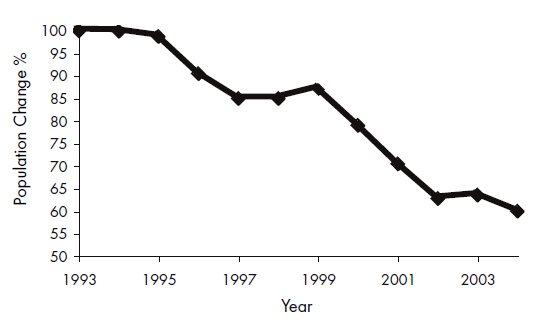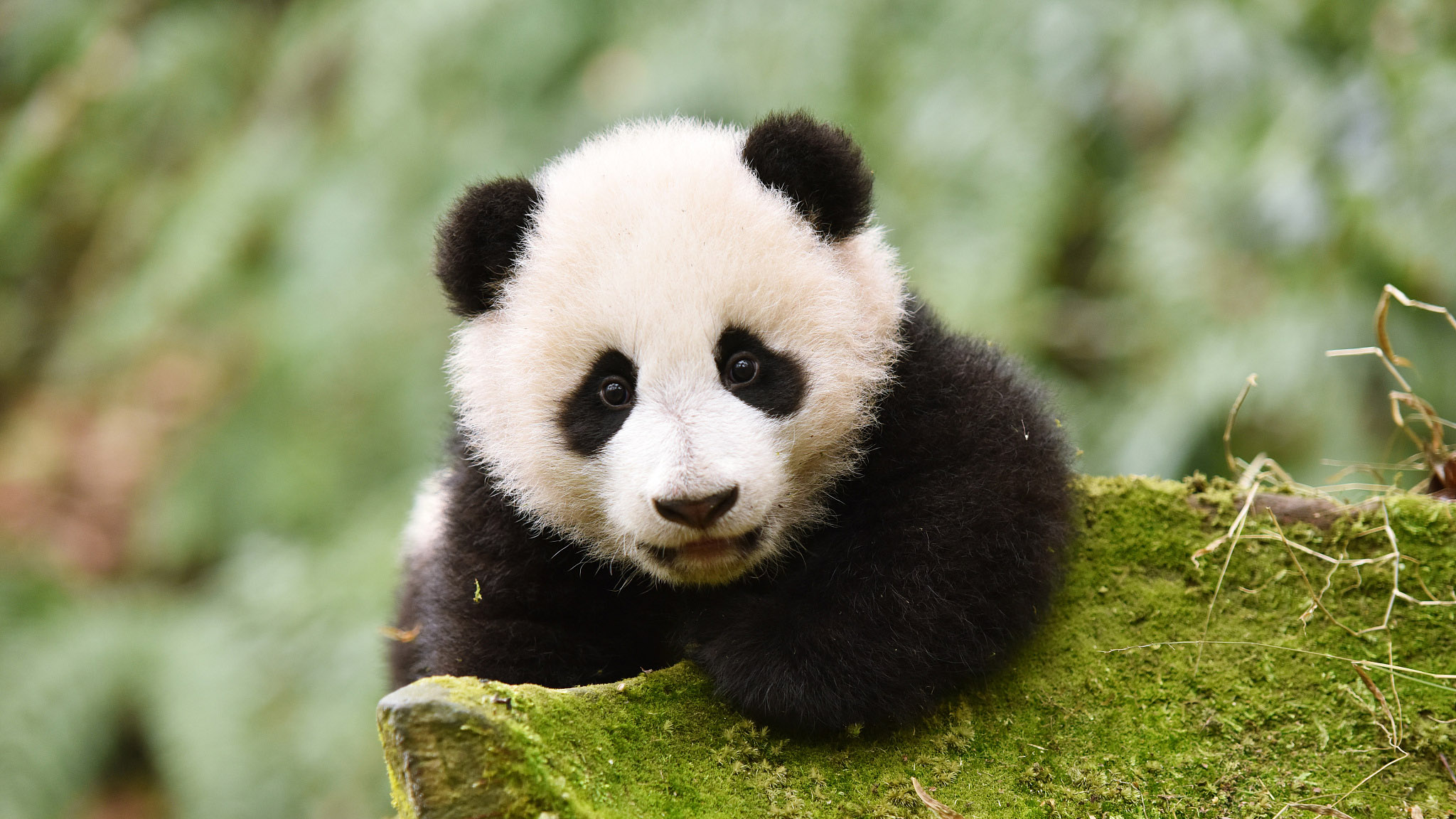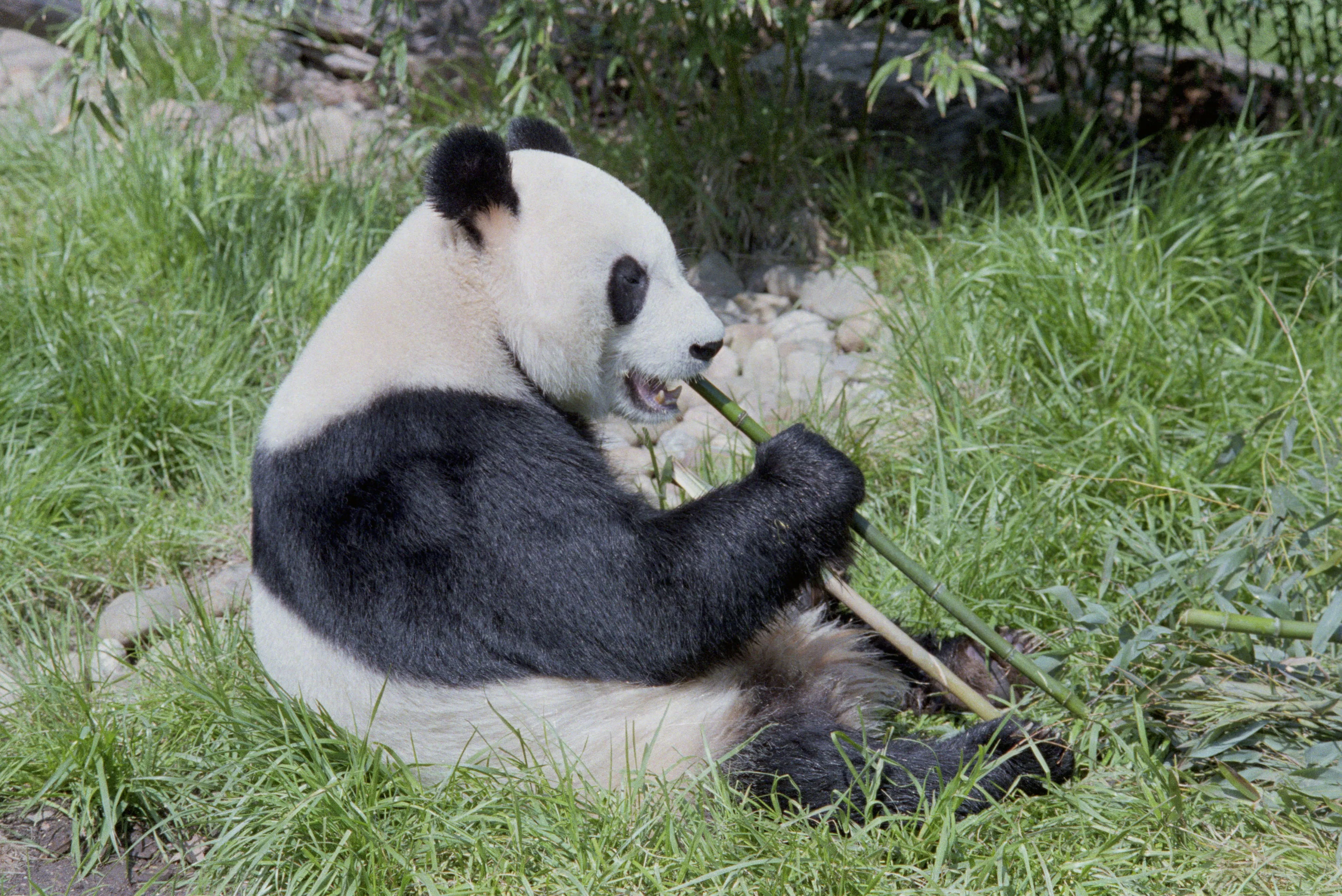STATUS
Vulnerable


The panda, with its distinctive black and white coat, is adored by the world and considered a national treasure in China. Despite their exalted status and relative lack of natural predators, pandas are still at risk. Severe threats from humans have left just over 1,800 pandas in the wild.
Pandas live mainly in temperate forests high in the mountains of southwest China, where they subsist almost entirely on bamboo. They must eat around 26 to 84 pounds of it every day, depending on what part of the bamboo they are eating. They use their enlarged wrist bones that function as opposable thumbs.
A newborn panda is about the size of a stick of butter-about 1/900th the size of its mother—but females can grow up to about 200 pounds, while males can grow up to about 300 pounds as adults. These bears are excellent tree climbers despite their bulk.

STATUS
Vulnerable

SCIENTIFIC NAME
Ailuropoda melanoleuca

POPULATION
1,864 in the wild

LENGTH
Adults can grow to more than four feet.

WEIGHT
220-330 pounds

HABITAT
FORESTS

The biological diversity of the panda's habitat is unparalleled in the temperate world and rivals that of tropical ecosystems, making the giant panda an excellent example of an umbrella species conferring protection on many other species where pandas live
In other words, when we protect pandas, we invariably protect other animals that live around them, such as multicolored pheasants, the golden monkey, takin, and crested ibis
Pandas also bring sustainable economic benefits to many local communities through ecotourism.
China's Yangtze Basin region holds the panda's primary habitat. Infrastructure development (such as dams, roads, and railways) is increasingly fragmenting and isolating panda populations, preventing pandas from finding new bamboo forests and potential mates.
Forest loss also reduces panda's access to the bamboo they need to survive. The Chinese government has established more than 50 panda reserves, but only around 67% of the total wild panda population lives in reserves, with 54% of the total habitat area being protected.




